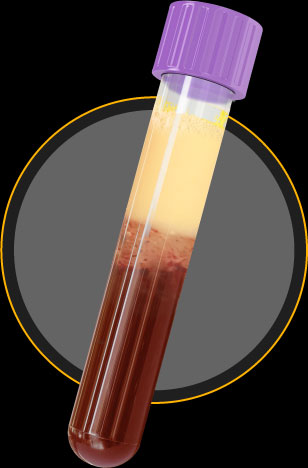An overview of evaluating patients for familial chylomicronemia syndrome (FCS)
Laboratory findings
Severe, treatment-refractory hypertriglyceridemia is the principal laboratory finding.12,14
The blood of patients with FCS can have a creamy or milky appearance due to the presence of large amounts of chylomicron particles.14 After mild centrifugation or storage at 4°C for 24 hours, the chylomicrons appear as a creamy supernatant layer in serum.14

Patients with FCS often have low levels of other lipoproteins such as fasting LDL-C, VLDL-C, and HDL-C, and correspondingly low apoliprotein B levels.30
Clinical features
FCS can be recognized by its clinical and laboratory features, though genetic testing is recommended to help support a diagnosis.4
Severe treatment-refractory hypertriglyceridemia12,14
- Fasting TG > 880 mg/dL (10 mml/dL), AND
- Minimal or no response to fibrates, niacin, omega-3 fatty acids, or statins
Clinical history14
- History of acute pancreatitis, OR
- History of recurrent, unexplained abdominal pain
When accompanied by complications, acute pancreatitis is associated with mortality rates as high as 30%.21
Absence of secondary causes4
- Diet, lifestyle, and/or medications associated with elevated triglyceride levels
People with FCS often have normal or low body mass due to severe dietary restrictions.30


